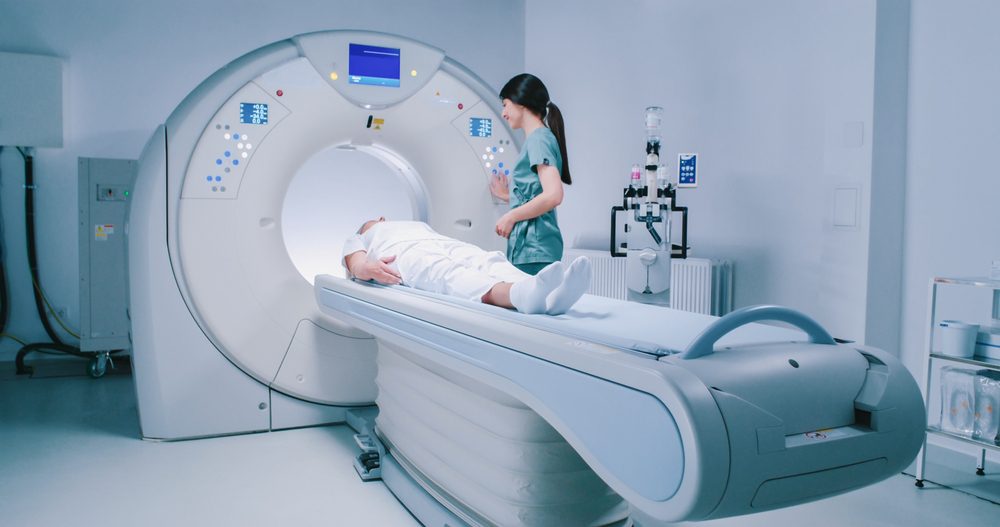
In medical imaging, the gantry is an integral component that plays a vital role in the functionality and effectiveness of diagnostic equipment like Computed Tomography (CT) scanners and Magnetic Resonance Imaging (MRI) machines. Here, we will explore in detail the six key aspects of a gantry, which highlight its significance in the healthcare industry.
1. Physical Structure and Design
The gantry is perhaps most recognizable as the large, circular frame through which patients pass during a CT scan or MRI. Its design is a marvel of medical engineering, combining robust construction with precise mechanical and electronic components. The structure must be sturdy enough to support the weight and movement of the internal components, yet designed with patient comfort and accessibility in mind. For instance, in a CT scanner, the gantry’s circular opening, known as the bore, is where the patient table slides through during the scan. The diameter of the bore is a critical design aspect, as it must accommodate patients of varying sizes and shapes while ensuring their comfort.
2. Housing of Imaging Components
Inside the gantry of a CT scanner, critical components such as the X-ray tube and detectors are housed. The X-ray tube emits the X-rays that pass through the patient’s body, while the detectors capture the X-rays that emerge on the other side. These components are mounted on a rotating frame within the gantry, allowing them to circle around the patient to capture images from multiple angles. In MRI systems, the gantry houses the large magnet and radiofrequency coils essential for imaging. The strength of the magnetic field and the precision of the coils are key to the MRI’s ability to produce high-resolution images of internal body structures.
3. Role in Image Acquisition
The gantry’s functionality is critical in the image acquisition process. In a CT scanner, as the gantry rotates, the X-ray tube and detectors move around the patient, capturing multiple cross-sectional images (slices) from different angles. These slices are then reconstructed into a detailed 3D image by computer algorithms. The speed, smoothness, and range of the gantry’s rotation are pivotal in determining the quality and resolution of the images. In MRI, the gantry’s magnetic field aligns the hydrogen atoms in the body, and the radiofrequency coils detect the signals emitted by these atoms to create images.
4. Patient Safety and Comfort
Modern gantry designs incorporate features to enhance patient safety and comfort. For instance, the speed of rotation in a CT gantry is calibrated to minimize patient discomfort while ensuring optimal image quality. Noise reduction features are especially important in MRI gantries, as the process can be quite loud. Additionally, open gantry designs in some MRI machines cater to patients with claustrophobia, providing a less enclosed space during the scan.
5. Operator Control and Interface
The gantry is controlled from an external console, usually located in a separate room where the radiologist or technician operates the machine. This console allows the operator to control the gantry’s movements, adjust settings for image acquisition, and monitor the patient during the scan. The interface typically includes multiple controls and displays, providing real-time feedback on the gantry’s operation and the ongoing scan.
6. Technological Advancements and Future Trends
The future of gantry design in medical imaging is shaped by ongoing technological advancements. Manufacturers continuously innovate to create gantries that are faster, more precise, and more patient-friendly. For instance, advancements in materials science may lead to lighter, yet stronger gantry structures. There is also a trend towards more patient-centric designs, such as wider bores and more open MRI systems. Additionally, developments in imaging technology, like higher resolution detectors and more powerful magnets, will continue to enhance the capabilities of these machines.
In conclusion, the gantry is a cornerstone in the field of medical imaging, encompassing sophisticated design, advanced technology, and a focus on patient-centric features. Its evolution reflects the broader trends in healthcare technology, where patient safety, comfort, and the accuracy of diagnostics are continually improving. As we look to the future, the gantry will undoubtedly remain a critical component in the ever-advancing landscape of medical imaging.
